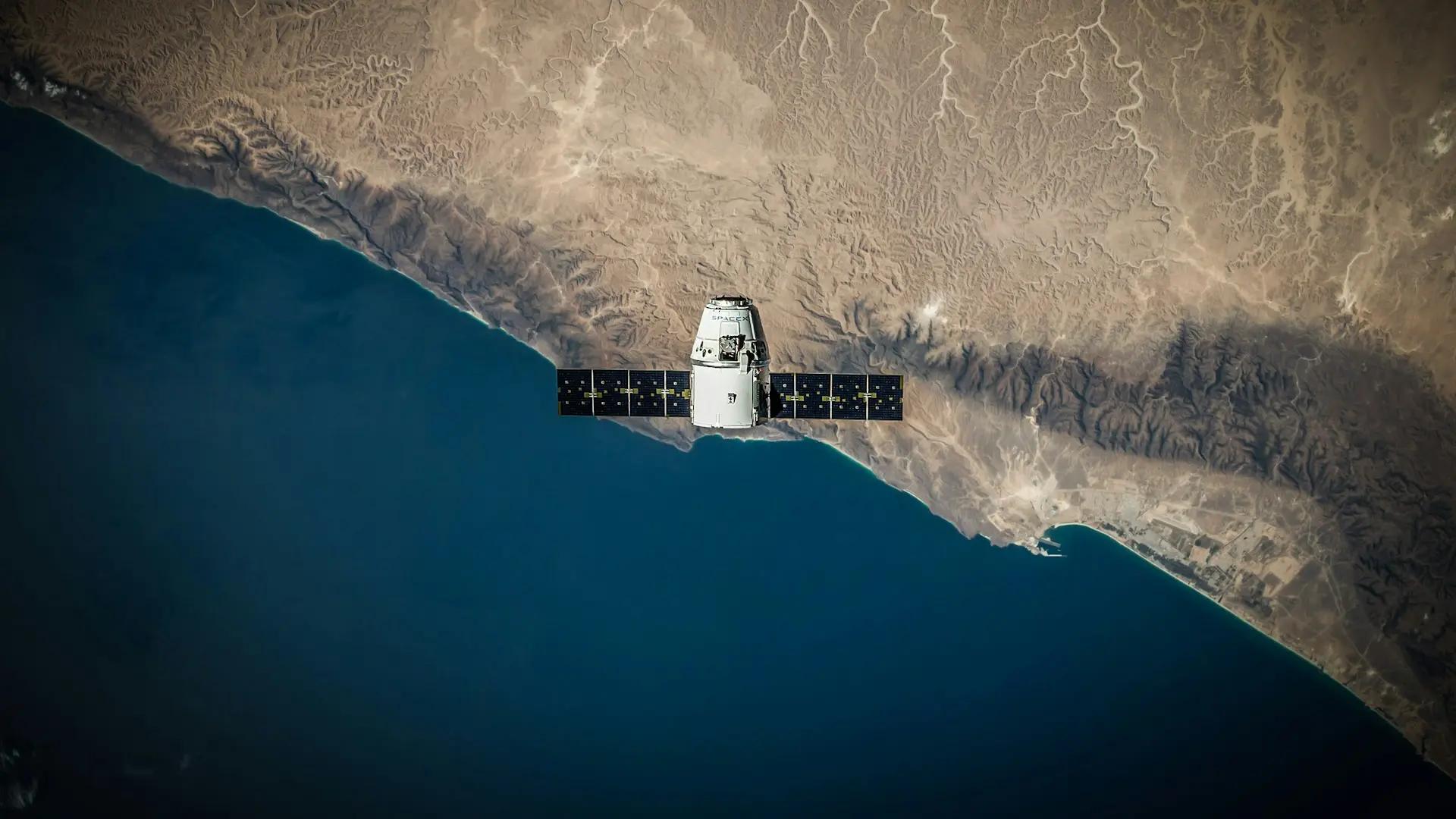Marlène de Bank: Sending so many satellites into orbit for Internet access is unsustainable
How does a satellite network work? What are the ecological consequences of sending satellites into orbit? Insights from Marlène de Bank, research engineer at the Shift Project.
You participated in the latest Shift Project report on virtual worlds and networks. Why did you join this organization?

I worked as an aerospace engineer on the Ariane 6 program. As discussions about the climate emergency increased, I questioned whether my professional activities were compatible with the environment. I joined the Shift Project and continued to explore this issue: what are the energy and climate challenges of the space sector?
This year at the Shift Project, we worked on two topics simultaneously:
- Virtual worlds, to discuss the design of future digital offerings (when aiming to stay close to a +2°C trajectory in terms of global warming).
- The infrastructures through which these uses are transmitted, namely mobile and satellite networks.
We aimed to consider both questions at the same time: what will our future uses be? And what will the corresponding infrastructures be?
What infrastructures are necessary for the operation of a satellite?
We need to consider both:
- satellites in orbit,
- launchers that send them into space,
- ground stations,
- user antennas, which act as the link between the ground Internet network and the one in orbit.

What can a user do with satellite networks?
Suppose I live in the countryside, without fiber or 4G nearby:
- To browse a website, I request Internet access from the dish on my roof.
- My user antenna sends a message to the satellite.
- The satellite sends a signal to a ground station connected to the Internet, which browses the Web using fiber, to connect to the server containing the requested website's information.
- The ground station then sends a signal back to the satellite in orbit. The satellite forwards the received information to the terrestrial user's antenna before it reaches their terminal.
Why will the number of satellites sent into space continue to increase in the coming years?
Previously, satellites were placed in geostationary orbit (about 36,000 km above Earth). To cover the Earth, only 3 were needed. Today, there are between 20 and 30 geostationary satellites to provide more capacity (i.e., more bandwidth for more users). The round-trip signal time between Earth and these satellites is 600 milliseconds.
By placing them in low Earth orbit, this round-trip time is reduced to between 30 and 60 milliseconds. Latency becomes important when a user plays video games or browses a website. To have a satellite overhead and provide global communication access, around a hundred satellites are needed. In 2022, we launched as much mass into low Earth orbit for such communications as for the rest of the space sector.

Why would replicating the Starlink solution in space be detrimental?
Starlink is a satellite Internet service provider by SpaceX that relies on a constellation of thousands of telecommunications satellites placed in low Earth orbit. The constellation has been deployed since 2019 and had around 4,700 operational satellites by mid-December 2023. To meet its commercial goals, SpaceX plans to have 12,000 satellites by 2025, with a future goal of 42,000.
Source: Wikipedia
"High-speed Internet worldwide" and "connection in the most unexpected places": that's Starlink's promise.
Starlink satellites currently provide Internet access to 3 million users. It is estimated that the launch and maintenance of current systems have emitted 1,600 kilotonnes of CO2 equivalent per year. This is twice the carbon footprint of fixed and mobile networks in France, for a slightly smaller number of people.
To cover 30 million users, this footprint would need to be multiplied by 10. For 3 billion inhabitants, the current carbon footprint would be multiplied by 1,000, which is precisely Starlink's goal. Thus, providing Internet access to everyone would add the equivalent of the global aviation carbon footprint.
If Starlink ever decides to reduce its carbon footprint, its teams could eco-design its antennas (with quality components, improving repairability, etc.). This solution could also be used only in uncovered areas. However, today the service covers non-rural areas where mobile networks and/or fiber are effective and less impactful alternatives.
How can we assess the ecological impact of satellite networks today?
It is estimated that between 2006 and 2015, the space sector emitted about 0.01% of global greenhouse gases. However, when launchers enter the upper atmosphere, they emit other particles. Depending on the fuel, this could be soot (from methane or kerosene, for example), or alumina or chlorine particles (from solid propulsion, for example).
Some of these small particles have the magical ability to absorb sunlight. This warms the stratosphere and creates differences in radiation and temperature. There are only about fifteen studies characterizing non-CO2 effects, whereas aviation has many more. By 2050, there will be 100 times more satellite launches than in 2015. If we multiply this number by the non-CO2 effects, which we know little about, the climate impact could be alarming.
Could the carbon footprint of the space sector be lower if it were funded solely by public services?
The space sector is at the intersection of public procurement and private investment, and it is very resource-intensive. Telecommunications, even in geostationary orbit since the 1980s, have always been driven by the private sector.
The question is the extent of its carbon impact - which is not mechanically related to the private part. Today, the first constellation (Starlink) to have populated this orbit with its satellites is also the one with the largest carbon footprint. It could have been a Chinese constellation. Industrial consortia in China are linked to the state, but the carbon footprint would have been the same.
The aerospace sector does not propose a decarbonization trajectory. Before multiplying our launches, it would be better to understand their ecological consequences... as a precautionary principle.
References:
[Cover photo: SpaceX]
Support us by sharing the article:










